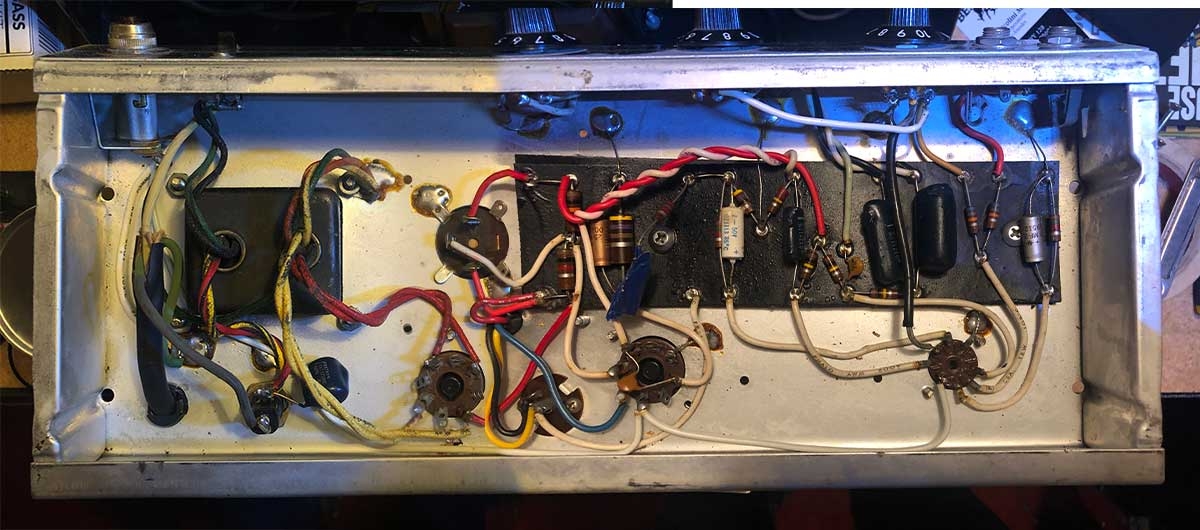
Sliver-Face Champ
About three or four years ago, I found myself falling down a rabbit hole of tube amp repair videos. It started innocently enough with the humble idea of building a custom foot-switchable preamp/mixer for my double bass. That lead to me building a few guitar stomp boxes. Before I knew it, I was watching hours and hours of tube amp repair videos every week.
Editor's note: The original draft of this post was created in June of 2019; however, I didn't get around to finishing it until December 17, 2019. I'm leaving it back dated, as time references in the post will make more sense I have since made additional repairs to this amp that I may detail in a future post.
Despite my infatuation with guitars, amps and guitarists, I don’t have much interest in playing guitar myself. I don’t quite understand this. The guitar is awesome, but I guess I’m just a bass player at heart. Nevertheless, my new amp is pretty sweet!
My buddy Ivan was the first to put it through its paces atBottom Dwellers rehearsal. We were both pleasantly surprised by just how easily it broke up. Here he is playing through it (and singing Robbie’s part!) on Rock and Line:
https://bottomdwellersmusic.com/media/audio/rehearsals/2019-05-30/10-rock-and-line.m4a
Ivan left his pedalboard behind for rehearsal the following week, and just ran direct into his ’69 Vibrolux. During a rendition of “Purple Rain,” he flipped the power switch on the Champ in anticipation for the solo, and swapped the plug for the Champ just in time:
https://bottomdwellersmusic.com/media/audio/rehearsals/2019-06-04/13-purple-rain.m4a
Solo starts at about the 4:00 mark. He swaps back at about 5:25. Please excuse the sloppy playing. This is a rehearsal recording, after all.
I thought that was pretty bad ass.
Of course, the whole reason I got the amp was to crack it open and tinker around with it. That Saturday, I finally got the chance.
Transformer and potentiometer date codes confirm the amp was build in 1977. It has original tubes, the original speaker, and only a two cathode bypass caps have been replaced.
The first thing that caught my attention, though, was the piece of blue duct tape covering the severed end of the resistor that is supposed to connect negative feedback from the output transformer. This explains why the amp breaks up so easily.
For fun, I reconnected the circuit with an alligator clip to see how the amp is supposed to behave. It did clean it up quite noticeably. I swapped back and forth for a while, deciding whether or not to put it back in circuit, or to put it on a switch or something. I ultimately soldered it back in to enjoy it stock for a while.
It's odd how familiar it feels inside this amp. The years I’ve spent pouring over schematics, layout diagrams, tube manuals, and Uncle Doug videos have me feeling like I've been doing this for years. My virtual apprenticeship has finally come to fruition.